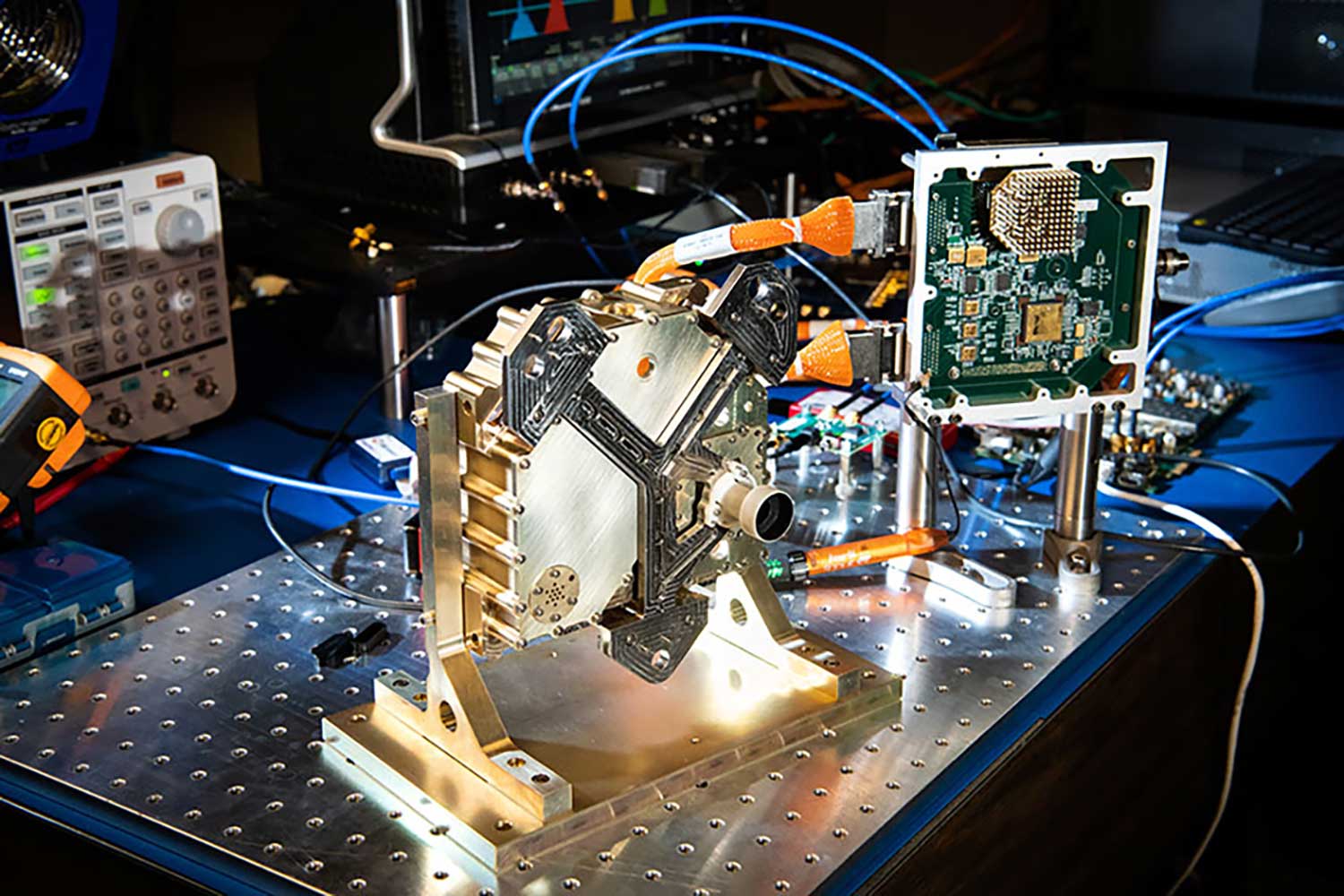Photon-Counting Camera for Deep-Space Optical Communications

The photon-counting camera utilizes Lincoln Laboratory's novel array of Geiger-mode avalanche photodiodes integrated with a custom integrated circuit to enable two-way optical communications from deep space. This deep-space optical communication system's ability to provide high-data-rate transmissions could expand the possibilities for human and robotic deep-space exploration.

Background
Future human and robotic expeditions into deep space will need fast, efficient means of communicating high-definition imagery, live video feeds, and copious data from space to Earth during their long journeys. Optical communication systems, which already provide high-rate data transmissions in free-space, may hold the answer to deep-space communications. Lincoln Laboratory and the Jet Propulsion Laboratory have been working with NASA on the Deep Space Optical Communication program to develop and demonstrate solutions for achieving reliable, fast-data-rate optical communications to and from the far reaches of the solar system. The photon-counting camera is one of these solutions.
Enabling Capabilities
- For two-way deep-space optical communications, the space-based system must acquire and track the laser beam sent to it from the ground (uplink) and maintain pointing of the beam that it is sending back down (downlink). The photon-counting camera finds the uplink beam and determines the center of the beam for downlink pointing. The camera can also receive low-rate data on a modulated uplink beacon.
- Space-based systems are limited in the size, weight, and power usage (SWaP) they can support. The photon-counting camera realizes significant volume, mass, and power savings because its focal plane array detector simultaneously performs the dual functions of (1) pointing, acquisition, tracking, and (2) data communication. Because the camera is capable of processing data for a specific region of interest and at programmable rates, it also reduces the required operating power to match data needs.
Benefits
- Uses a focal plane array detector capable of simultaneous data communication and pointing, acquisition, and tracking of optical beams
- Maintains the stability necessary for detecting optical beams
- Is protected from the rigorous thermal conditions and radiation effects in deep space
- Operates with a small receive aperture to allow for the limited space available on a spacecraft
- Provides single-photon sensitivity that enables transmissions over long-distance, photon-starved communication links between systems
Additional Resources
U.S. Patents 10,636,929; 10,109,671; and 9,911,774
More Information
N. Pestana et al., "Evaluation of Asynchronous Geiger-Mode Avalanche Photodiode Arrays for Deep-Space Optical Communications," Proceedings of SPIE 11721, Advanced Photon Counting Techniques XV, April 2021.